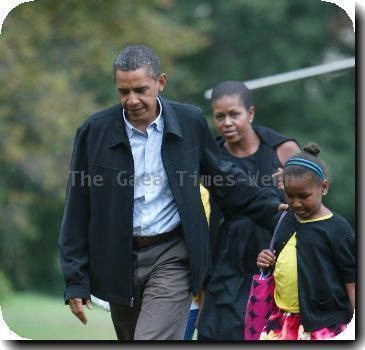Pressure on China, India to offer detailed proposals ahead of UN climate talks in Copenhagen
By Christopher Bodeen, APTuesday, December 1, 2009
EU leaders want details on China emissions plan
BEIJING — European leaders called on China to provide details on how it plans to curb its greenhouse gas emissions, saying Tuesday that Beijing’s status as the world’s largest polluter gives it a special responsibility to combat global warming.
India, meanwhile, is under growing pressure to offer up a plan of any kind with less than week to go before 192 nations gather in Copenhagen to try to craft an international agreement for controlling emissions of carbon dioxide and other gases believed responsible for global warming.
Scientists warn of potentially catastrophic climate change if average global temperatures rise more than 2 degrees Celsius (3.6 Fahrenheit) from preindustrial levels, leading to rising seas and climate shifts that would produce droughts, floods and other severe disruptions.
To prevent that, greenhouse gas emissions should peak within the next few years and then rapidly decline by mid-century, according to the Nobel Prize-winning Intergovernmental Panel on Climate Change.
Announcements from both China and the U.S. in the past week add significant weight toward achieving a global agreement — even though the Dec. 7-18 Copenhagen conference is unlikely to produce a binding deal as hoped.
China promised last week to nearly halve the ratio of pollution to GDP over the next decade — a major voluntary step that came a day after President Barack Obama promised the U.S. would lay out plans at this month’s global warming conference in Copenhagen to substantially cut its own greenhouse gas emissions.
China’s plan does not commit it to an overall reduction in emissions, which will continue to increase, though at a slower rate.
Following a meeting with Chinese President Hu Jintao, Swedish Prime Minister Fredrik Reinfeldt said the Europeans wanted to analyze the figures and find out precisely what measures Beijing plans to put into place and “how it will differ from their business as usual pathway in regards to emissions.”
Reinfeldt, whose country holds the rotating EU presidency, credited China with pursuing renewable energy and nuclear power as a substitute for coal-burning plants that spew carbon dioxide.
However, China’s status as a major source of increase in global emissions requires Beijing to do more, Reinfeldt said, citing a continuing rise in global temperatures.
Also Tuesday, Indian Prime Minister Manmohan Singh spoke with Obama about the upcoming climate talks and said India “would play a constructive role in the negotiations and looked forward to a successful outcome,” Singh’s office said. But it did not say what, if anything, India is willing to do to combat climate change.
Rajendra Pachauri, the chairman of the U.N. Intergovernmental Panel on Climate Change, said there is “enormous pressure” for India to commit to some measures that are part of a deal. But he ruled out emissions reductions.
“Cutting emissions is out of question,” Pachauri told reporters in New Delhi. “How can a country like India at this stage of our development accept any cuts in emissions? That is totally out of the question. I don’t think anybody in the government would think of that at this point of time.”
Scientists say the industrial countries by 2020 must slash carbon dioxide emissions by 25 to 40 percent below the amounts they produced in 1990 to prevent the catastrophic climate change.
In addition, developing countries like India and China need to lower their emissions growth by 15 to 30 percent from current levels, according to the U.N. Intergovernmental Panel on Climate Change.
Until a few weeks ago, there was no consensus on reaching that goal and growing doubts that a deal would be reached in Copenhagen.
But then the United States announced last week that it would pledge to reduce U.S. emissions by 17 percent from 2005 levels by 2020, and that the U.S. would continue that downward path over the following 10 years to reach a 41 percent reduction.
The World Wildlife Fund said the U.S. pledge for 2020 translated to 4 to 5 percent below the commonly accepted benchmark year of 1990.
A day after the United States, China announced it would cut “carbon intensity,” a measure of carbon dioxide emissions per unit of production, by 40 to 45 percent by 2020, compared with levels in 2005.
The Chinese target means emissions will continue to grow as its economy expands, but at nearly half the rate they otherwise would have done.
Tags: Asia, Atmospheric Science, Barack Obama, Beijing, China, Climate, Copenhagen, Denmark, Earth Science, East Asia, Environmental Concerns, Environmental Science, Europe, Global Environmental Issues, Greater China, Hu Jintao, India, Manmohan Singh, North America, South Asia, United States, Western Europe

